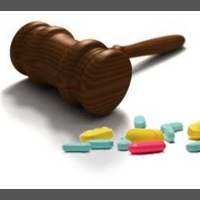Unintended, but Not Unknown, Consequence of Prop. 47: Less Drug Treatment

California is going to have to find another way to steer convicted criminals into drug treatment programs following the passage last month of Proposition 47, the measure reducing sentences of some lesser crimes from felonies to misdemeanors.
The law is aimed at complying with federal court orders to reduce prison overcrowding by redirecting convicted criminals to county jails, which have their own overcrowding problems. As a result, even the shorter misdemeanor sentences are being further reduced to clear space.
Drug offenses are prominent among the crimes reduced to misdemeanors and many other crimes have addiction as a motivating factor. The move was applauded by many who thought California’s punishing tough-on-crime approach for drug users was ineffective and unjust. They prefer an emphasis on drug treatment and rehabilitation to locking people up with hardened criminals for a long time.
Ironically, one of the unintended, although not unexpected, consequences of Prop. 47 is a much smaller pool of participants in drug court, the rehabilitation alternative offered throughout the state and nation. Without the threat of felony hard time, drug offenders are already opting to take the misdemeanor and skip the rehab, the Los Angeles Times reported last week.
L.A. Superior Court Judge Michael A. Tynan told a large group of 16 drug court graduates that he doubts he’ll see another large class for awhile and that some of those graduating wouldn’t be there if Prop. 47 was in place before their conviction.
California's first adult drug court began in Alameda County in 1991 and has grown into a system of more than 220 courts. The courts, a collaboration between judges, prosecutors, public defenders and law enforcement, are considered a successful foundation of reform in the justice system.
One of the questions faced by Prop.47 supporters who value drug court was whether the end result of getting people with substance abuse problems into treatment was justified by threatening a punishment they thought did not fit the crime. The hope is there is another, less ethically challenged, way to induce participation in drug court.
Dueling experts disagree whether coercing people into drug court maintained the same long-term effects of less threatening inducements. Some hope that amped up efforts to extol its virtues to defendants will attract addicts who are looking for a way out.
But there will be some effort to expand the range of participants to include criminals previously considered a tad too dangerously hardcore, like those convicted of felony vandalism and first-degree burglary. Some critics of drug courts think they presently focus too many resources on low-level drug users―marijuana users, for example―and need new priorities.
The quandary the state finds itself in is a direct result of making criminal justice laws harsher, not spending money to accommodate the resulting additional criminals and failing to establish effective drug treatment rehabilitation programs. The state is scrambling now to change its ways in the face of intense federal pressure to treat prison inmates humanely.
For now, it looks like drug court might be a casualty of the short-sightedness.
–Ken Broder
To Learn More:
Prop. 47 May Keep Addicts from Using Drug Court's Treatment Program (by Marisa Gerber, Los Angeles Times)
NADCP Opposes California’s Proposition 47 (National Association of Drug Court Professionals)
Drug Courts Overview (California Department of Health Care Services)
Drug Courts (National Institute of Justice)
- Top Stories
- Controversies
- Where is the Money Going?
- California and the Nation
- Appointments and Resignations
- Unusual News
- Latest News
- California Forbids U.S. Immigration Agents from Pretending to be Police
- California Lawmakers Urged to Strip “Self-Dealing” Tax Board of Its Duties
- Big Oil’s Grip on California
- Santa Cruz Police See Homeland Security Betrayal in Use of Gang Roundup as Cover for Immigration Raid
- Oil Companies Face Deadline to Stop Polluting California Groundwater





